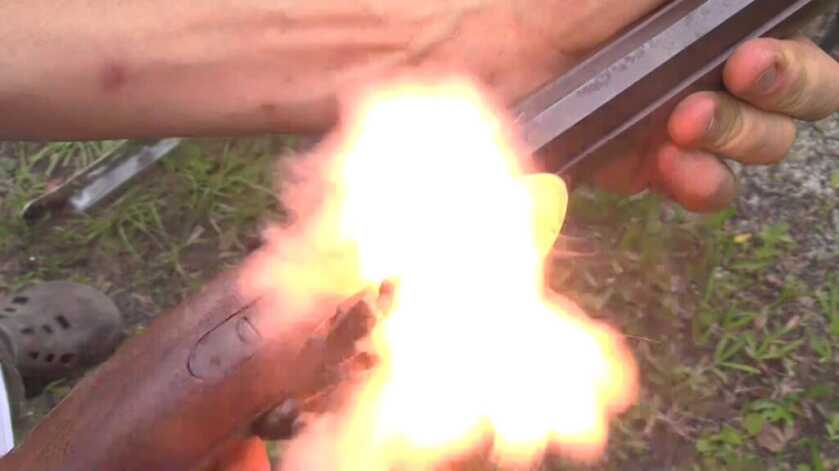
There are two approaches to the history of firearms. One is obviously historical, and I have to say that it isn’t boring. The history of firearms is really the history of the world since it got really interesting. And as much as I love that history, I think that if you focus just on that, you are genuinely missing out.
I prefer to experience the history of firearms, and that is why I started up this new Black Powder Project. Because until smokeless powder became widespread in the 1890s, all firearms, going all the way back to guns like the handgone, (which is like a little mini cannon on a stick) everything shot black powder.
Most people class all “muzzleloaders” in the same breath (and dismiss them for anything but an extra week of deer season), but the different technologies differ from each other a lot. Eventually I would like to explore some of the early methodologies from the dawn of the firearms age, but for sure we will be doing caplock rifles soon. Percussion caps are almost as scarce as primers right now. So since I already covered the basics of what are probably the funnest caplocks, Civil War era revolvers, I figured we could move to something that I know you can shoot right now.
Flintocks.
I tried to keep the video from rambling as is my nature, and I cut a lot of stuff out, but it is still long. I think it’s worth watching, just to bring the idea of buying and shooting a flintlock into the real world for you. If you got into shooting recently, or even since 2008 when we had a huge spike in gun owners, flintlocks are probably a very foreign concept right now. But they not complicated, really fun, and inexpensive to shoot. A pound of FFG black powder is $21.99 at Midway right now for your main charge. One pound has 7,000 grains in it, so figure at least a hundred shots per pound. One pound of FFFFG for your pan will last thousands of shots.
For flintlocks, you have to use black powder. I have tried Pyrodex and Triple Se7en, but they don’t usually ignite reliably.
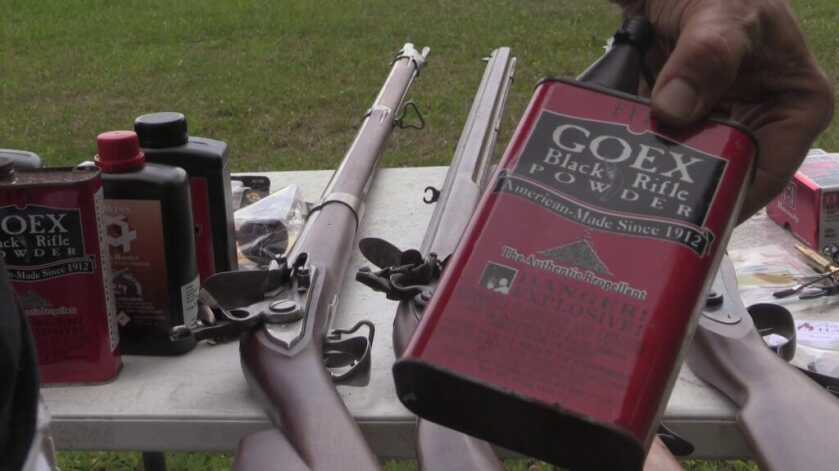
You will also need lead balls. Hornady makes a swaged ball for most calibers. For a 45 caliber, you’ll look for a .440 roundball. As you can see in the video, I used a .445 and it was pretty tight to get in there. For 50 caliber guns, look for a .490, for 54 it’s a .530, and for 58 it’s a .570. Usually they will just say the caliber on them and the small print will be the size. There are also 32 and 36 caliber guns out there, as well as 40 caliber.
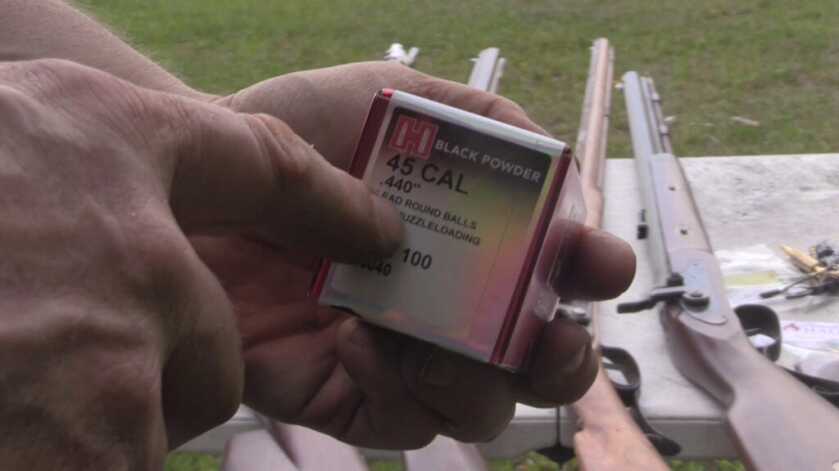
Balls are not terribly hard to find. Midway has the the most expensive Hornady swaged balls backorderable right now for 18 cents a round. Bullet molds are plentiful for roundballs, and you’ll get about 40 per pound of 45 or 50 caliber, so even if you pay Ebay prices for lead, it’s under a dime each.
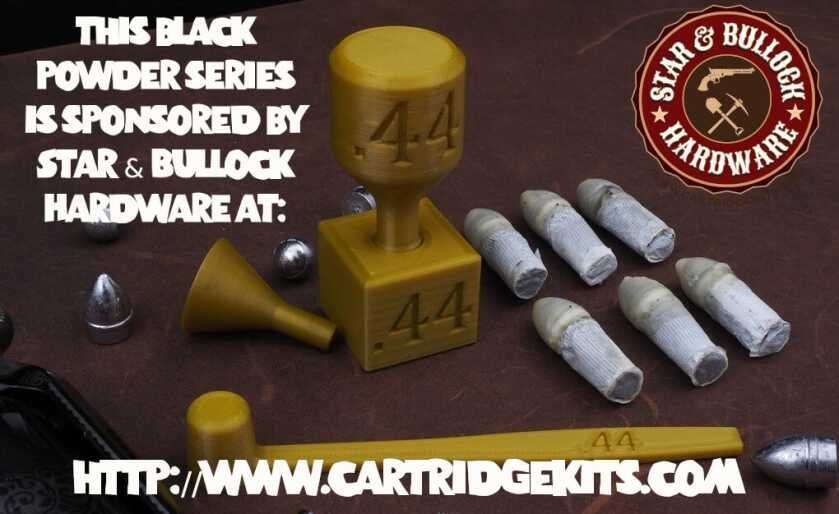
Patches are pretty standard at .018, and you can make your own from an old pair of jeans if you want. I didn’t cover prelubed patches in the video, but they are available from the same sources. Patch lube can be Crisco, black powder lube (we have a video on it), or a commercial variety. You can cut your patches yourself by pushing the ball in then cutting the cloth off at the top with a patch knife, or you can buy circles like you see in the video.
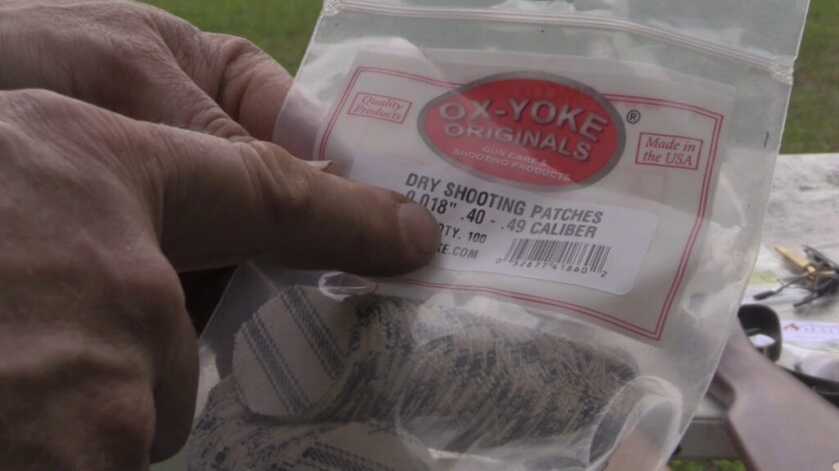
For roundballs the rifling twist is usually 1:66, which means that the ball will turn once in 66 inches, which is longer than the barrel. A roundball twist is meant to not rip the patch, and is meant for distances not much further than 100 yards or so. Thompson Center and some Italian guns will have a 1:48, which is meant to be able to handle conical bullets, yet not too aggressive to effectively handle roundballs. Long range muzzleloaders have as tight as a 1:12 twist, and we’ll get to that at some point.
Buying a Flintlock
There are both rifled and smoothbore flintlocks. The Revolutionary War guns are all smoothbore. Many rifles were documented to be at most major battles, but for the most part the main weapons of the war were smoothbore. The same is true of the Napoleonic wars.
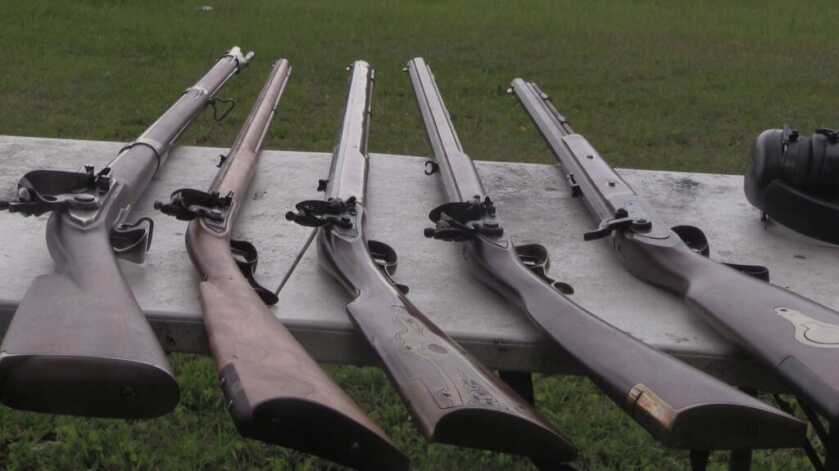
At the end of the video (and linked below), I show you where there are any number of Flintlocks available right now at normal prices. To get started I would get a Traditions, a Pedersoli, or a Lyman, which are sometimes Pedersolis and sometimes Euroarms. All of them have impeccable quality, and you can count them to be a great first experience.
The most popular style of muzzleloader is called a Hawken, and all of the brands above come in many different Hawken configurations. The nice thing about Hawkens is that they are easy to take down so you can clean under the barrel where the action rests. I think they they are ugly.
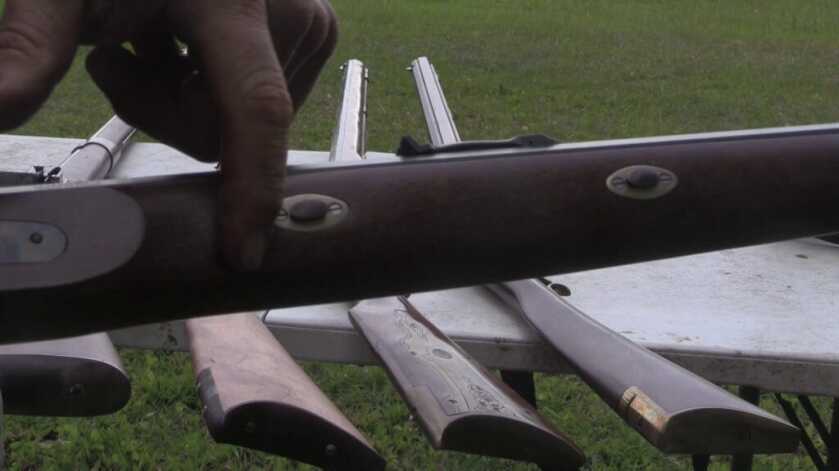
The American Longrifle is, by contrast, always elegant. My first was the Pedersoli that I shoot in the video, and they still sell it at Cabelas, which I show you at the end, and I will link to below. They are sometimes called Kentucky Rifles, sometimes called Pennsylvania Rifles, and there are a number of other names like Southern Mountain Rifle. If it is a rifle, with rifling, and it is long, it’s an American Longrifle. They were an adaptation of the German Jeager back in the day. We made them longer, skinnier, and generally of smaller caliber.
You can also of course go the historic smoothbore route. Available right now are the Brown Bess, several different variations of Charleville, (the one in the video is the French), and there are a lot of smoothbore trade rifles that are favored by the Mountain Man groups because they were the most prolific in early America.

As this new Black Powder Project continues, I hope to take all of these guns out to the range and walk through the positives and negatives of each. There are lot of really interesting guns out there that are a blast to shoot, and flintlocks are just an option that is particularly practical right now because of the ammo shortage. For those of us who like to just get out and shoot, I wanted to get you something tangible to get you started now.
“Custom” Flintlocks
There was a time that I thought I knew just about everything about black powder guns. But in starting research for this Black Powder Project, I quickly realized that I knew not very much at all. There are now long range competitions for muzzleloaders, out to 1,000 yards and beyond. You can buy muzzleloaders that are carved and inlaid in the style of specific builders from the 18th and 19th century, and even without any fancy stuff, a handmade muzzleloader can reach into the several thousands.

In the video you will see a gun I bought recently, and it was a horrible disappointment. I cut a whole diatribe out of the video, because who wants to sit and listen to someone whine right. But you should beware that there are a lot of supposed “builders” out there who aren’t selling anything special, but are taking advantage of the price points that have been established by others who take meticulous care to bring you a rifle of quality and beauty. This gun came in with the barrel browning still on it, so picture opening a wooden crate, and inside a what is effectively a gun covered in rust. The lock also didn’t work, and the hardware in the cheekpiece was not as pictured on the website (Sitting Fox Muzzleloaders). It even had a sharp edge that cut me pretty badly while making the video.
So just be careful. There are a lot of great guns out there, and great builders, but there are also a lot of people taking advantage of good will and just building a kit they purchased, and finished very sloppy. Fortunately even a gun like this can be cleaned up, and it will probably shoot just fine, but it isn’t worth the money.
Flintocks are considered the highest echelon of custom guns from what I have seen. There are only a few companies that specialize in the barrels, and even fewer who make the locks. Some of the higher end builders make their own locks, and prices can range into the tens of thousands for a custom gun to your specifications. Do a ton of homework before you jump in.
Building Your Own
If you have the time and the space and the inclination, you can also create a rifle of your own. The easiest kit an impeccable reputation is Jim Kibler’s kits at https://kiblerslongrifles.com/. There are other kits out there, but they will require much more hand fitting.
Before you begin, take a look around the online booksellers and Ebay for books on original builders and the different schools that evolved in the different regions of the early USA. You will quickly learn that there is a wealth of information out there that you had no idea existed, and it is addictive once you get started.
How to Load and Shoot a Flintlock
Loading a flintlock isn’t much different from any other traditional muzzleloader. The ideal powder charge for the best accuracy will be somewhere around your barrel diameter. So 45 grains for a 45. I personally never shoot with charges that low, and in the video I used about 65 grains, which is about a full 45-70 shell as I had forgotten my powder measure.
As you can see from the video, I decided to try some .445 roundballs in this gun, and they were a might tight with a generously lubed .018 standard pillow ticking patch. It could partially be because of some surface rust just inside the muzzle, as this gun had not been looked at in at least a decade.
You will start your ball with a “ball starter” tool, available at many of the resources below. There are plastic and wood/brass variations. And as you can see I had tried a CVA palmsaver tool as well, to no avail. You will not have such a tight fit using a ball that is .010 under bore size.

Once your ball and patch are into the rifling, the rest of the path is easy, at least on your first round. Starting on the second, it will get harder as black powder fouling crud fills up the grooves of your rifling. I suggest that you swab the bore every two or three shots rather than hammer your ramrod through it. This can be done with a swab, or just a patch, dipped in soapy water. Then run a dry patch.
It is very important to get a set of the ramrod tools I show you in the video. You will inevitably loose a patch in the gun as you swab it, and don’t be surprised if you brain fart and push a ball down forgetting to drop the powder first at some point. So a ball remover is very important.
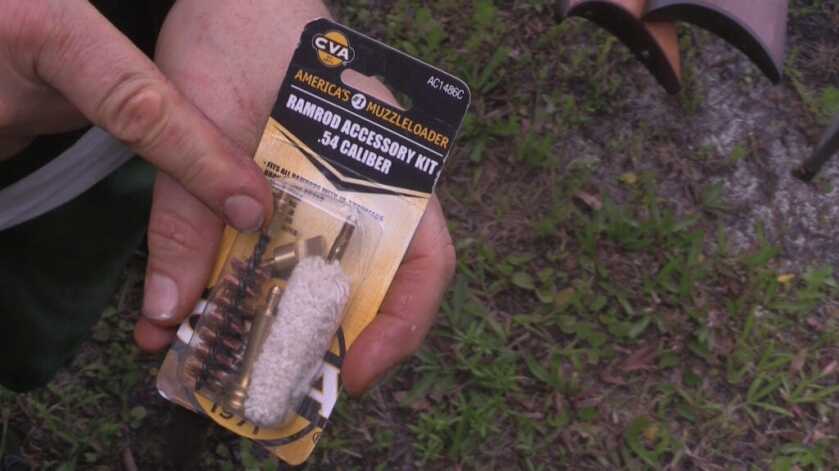
This is a very different world from an inline muzzleloader, if that is your frame of reference. Most flintlocks, outside of the Hawkens and some Pedersolis, aren’t really meant to have their barrel removed. They are held in by pins, and I have never been brave enough to take one out expecting it to go back in neat and tight. Few will have a removable breech plug, regardless, even Hawkens like the Traditions in the video, so you are really dealing with a long black hole that you can’t get to without poking down there.
The pan charge in flintlock is generally FFFFG, and as you can see from the video, I don’t skimp with it. Pan primer flasks come in various sizes, and the one in the video is smaller than I have used before. It had been some time since I had shot a flintlock, so I didn’t even bother to try to find my old tools.
Cleaning the gun is with soapy water at the sink. A breech scraper is a handy tool for your ramrod to get the fouling out.
Resist the urge to go up and down with a patch or brush repeatedly. This can cause flakes of fouling to fall into your breech and eventually clog it up. Just one trip down and one trip up before you clean the brush or patch. I’ll do a video and article at some point on this as well.
The guns are out there. The powder is out there. The accessories are out there. You will not regret buying and shooting a flintlock.
Resources
Cabelas Pedersoli Blue Ridge Flintlock
Midsouth Shooters Supply Flintlocks
Track of the Wolf Flintlocks – Custom and production guns.
BV Colonial Crafts Flint Wallets
RMC Oxyoke Flintlock Starter Kit
Muzzle-Loaders Balls and Bullets – also has a lot of accessories

Religious use of a natural base lube (such as TC Bore Butter) will significantly reduce bore fouling and make for a much quicker clean-up after shooting. Many petroleum or even vegetable base lubes (crisco) contribute to fouling, especially with black powder. I have a TC caplock that I bought in the early 90s. I’ve used the bore butter lube and (TC) No. 13 cleaner exclusively. Never have to use hot, soapy water to clean the bore, and it’s still pristine.
Black mz is a black powder subtatute that is 99% corotion free maide by Alaint powder and will work with flintlock , percussion cap and shot gun primer I use four f black powder for the pan
I’ve shot flintlock muzzleloaders for over 40 years and have the following tips for improving their ignition performance. If using Pyrodex, put a small charge of black powder down first then the main Pyrodex charge. Use fff or ffff Black Powder in the priming pan and only fill it up to the bottom of the flash hole. Don’t cover the hole and use a pick or piece of wire to clear any powder out of the flash hole. If possible put the pick in the hole before pouring the powder in the pan. When you fire you want the flash to jump thru the hole and ignite the main charge. If the flash hole is full of powder it acts as a fuse and there is a delay while that burns. Of course, you need a good sparking flint and frizzen. If it doesn’t spark well the frizzen can be re-hardened. I have flintlocks that have almost instantaneous ignition using this technique.
Yeah and throw in some unique as well lol. The whole point of Pyrodex is to not use BP. And that doesn’t work in flintlocks.
Pyrodex will not ignite in a flintlock because it takes a hotter flame from a cap to set it off. You can load a small charge of black powder down first and then the balance of the charge with Pyrodex but who wants to fool around with that. Shoot real black powder in a flintlock and save yourself the aggravation. For more and better information on shooting flintlocks visit the American Long Rifle forum. https://www.americanlongrifles.org/forum/
I have 2 of my late father’s flintlocks. He was well known for his customized Siler locks and his own custom set triggers. He once told me that if I ever put Pyrodex in one of his guns, he’d cut my nuts off! 😉
Black mz works great in a flint lock
The problem is that the powder was discontinued years ago by Alliant, and it’s gone. Most out there say it was not reliable in flintlocks anyway.
Yeah Midway has the Goex for $21.99 but with $12 shipping and $12.99 Hazmat, you are pushing $50 a pound for powder and they limit you to one pound
I am not a Minute Man nor a Hawkeye so no flintlocks for me. For the time being I am well stocked with k’s of primers and plenty of ammo. However if you are into history and have the patience, go for it. There is a league of shooters (do not know the name) that use black powder rifles (like the one in the civil war more or less) to shoot out to 1000 yards in competitions. The trajectory of the bullet is like a mortar and you can run an NFL 40 meter dash while the bullet gets to the target. It is a game for real experts.
Nothing like a smoke pole! I have several flintlocks and enjoy shooting them…cleaning them, not so much!
So what’s the issue with Pyrodex? I know you mentioned unreliable ignition, but is that when using Pyrodex as both the main and pan charge? Since Pyrodex works with cap and ball, I’d think it would work well in a flintlock — as long as the ignition source is good. So black powder for the pan, Pyrodex for the main charge MIGHT work well. Or does a percussion cap just have a hotter or more consistent flame?
It’s common sense really. A charge directed through a tube and concentrated versus an open air random spark.